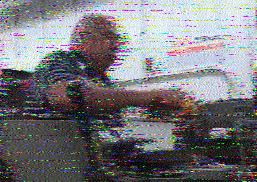This is not directly related to Part 15.. maybe not at all, but it is a fascinating use of an AM broadcast.
It's called VOA Radiogram.
Basically is a method of embedding webpage like content within a tone via an shortwave AM broadcast!
No internet connection or special equipment is needed to receive or decode the signal other than a standard shortwave receiver and a computer or smartphone.
I don't have a shortwave receiver, but if I did, I'd be all over this:
=============================================================
To decode and read the VOA Radiogram text and image transmissions, you will need the following items:
1. A shortwave radio. The radio does not need to have single sideband (SSB) capability. Even if you do have SSB capability, listening in the AM setting will probably work best.
2. A basic personal computer. It does not have to be particularly powerful.
3. A patch cord from the audio output of the radio to the audio input of the PC. This is usually from the earphone jack of the radio to the microphone jack of the PC.
4. Free software such as Fldigi, Flmsg and Flamp, which you can download from http://www.w1hkj.com
More detail here: How to decode the modes
There are four, 30-minute broadcasts every weekend broadcast on different frequencies all originating from the Edward R. Murrow transmitting station in in North Carolina...
VOA Radiogram transmission schedule:
Sat 0930-1000 5745 kHz
Sat 1600-1630 17860 kHz
Sun 0230-0300 5745 kHz
Sun 1930-2000 15670 kHz
=============================================================
Here's a Radiogram sent from North Carolina as it was received and decoded in Japan...
http://youtu.be/gnhU6Rq6-tk This one included only text, but some of the other examples include images such as logos and photos as well.. see more here: http://voaradiogram.net/
"Because of the distant signal (all the way from North Carolina) and over-the-horizon (OTH) radar causing, not much is heard until 1:08 into the video, when the sound of MFSK32 breaks through, and the text begins to display.The images are fuzzy, as befits the distant signal:"
=============================================================
Here's a fascinating introduction from Radio World :
http://www.radioworld.com/default.aspx?tabid=75&entryid=10210
Below I've copied and pasted the highlights from this article..
"......They want to draw attention to VOA Radiogram, a form of international high-frequency broadcasting. Radiogram is a VOA program experimenting with digital text and images via shortwave broadcasting;
Radiogram broadcasts Web content via error-detecting/correcting AM tone modulation, using standardized formats commonly used by ham radio. They say this approach is robust and resistant to interference.
“The user’s ordinary shortwave receiver, tuned to a Radiogram transmission, feeds its audio to a user device. These could include mobile phones, tablets, laptop and desktop computers and the new ARM-based miniature computers and embedded devices. The user device decodes the tones and displays text and imagery despite propagation impairments and intentional interference — and without Internet connection.”
They point out that no hardwire connection is required; putting the radio near the phone or computer is usually sufficient. “By adding a simple audio cable between receiver and user device, however, reception can be silent and covert. No specialized hardware is needed, and the software platform for decoding is long in the public domain.”
The user need not be present to receive content, and essentially receives a web magazine “updated at will and always ready for use” that can be redistributed.
“Naturally, the audio tone transmission can be recorded for later playback. Even when buried well under music or noise, the nearly inaudible recorded broadcast can nevertheless deliver 100% copy upon decode. “
Radiogram’s transmission methods provide text at 120 words per minute, along with images.
“Sent over regular broadcast transmitters (no modifications needed), this approach effectively extends the reach of the transmitter. In other words, the digital text mode will decode in locations where the audible speech over the same transmitter would be too low for aural intelligibility. The audio recorded or captured could be replayed over another transmitter to even further extend the reach of the broadcast.”
=============================================================
I can't help but ponder... Since no special equipment is needed on either end, is it also feasible to experimenting the same procedure with part 15 AM locally?
=============================================================


No comments:
Post a Comment
Add your comment..